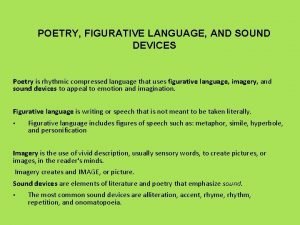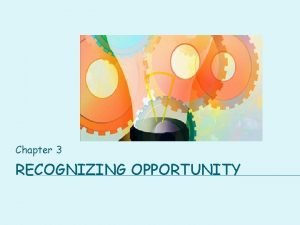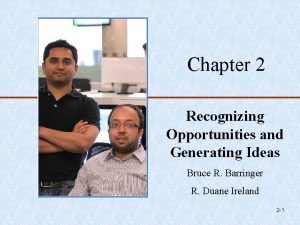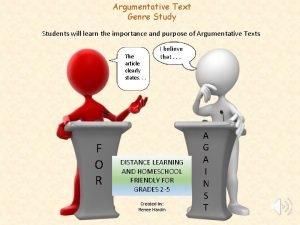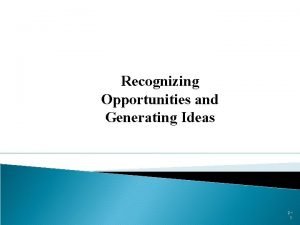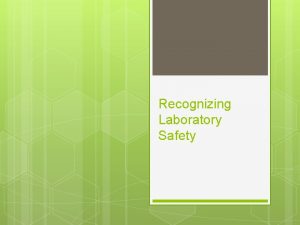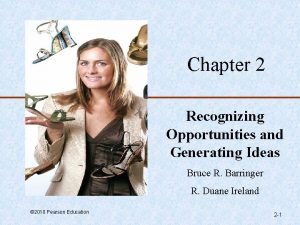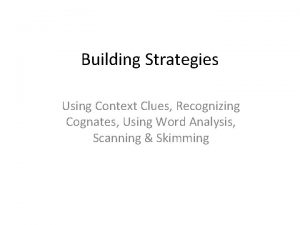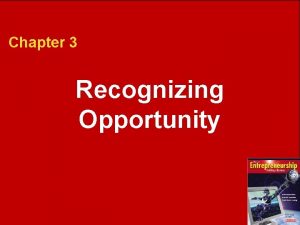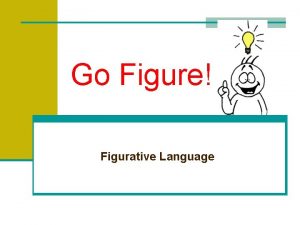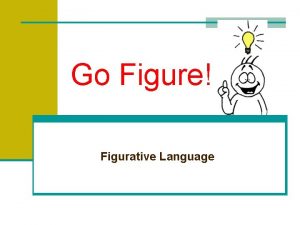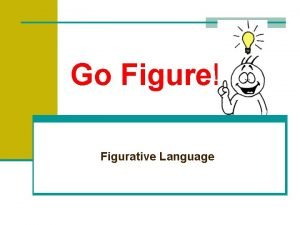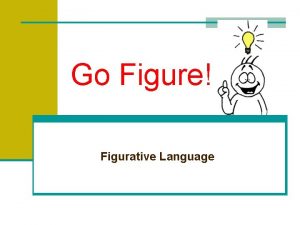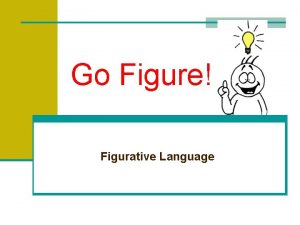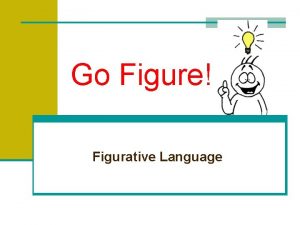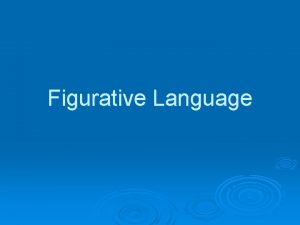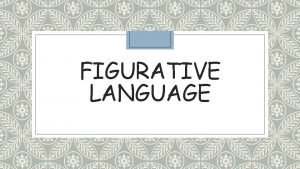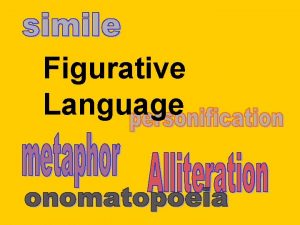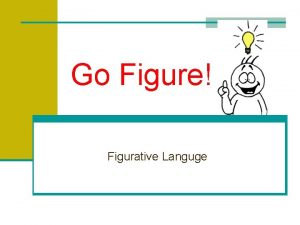Go Figure Figurative Language Recognizing Figurative Language The














- Slides: 14

Go Figure! Figurative Language

Recognizing Figurative Language The opposite of literal language is figurative language. Figurative language is language that means more than what it says on the surface. n It usually gives us a feeling about its subject. n Poets use figurative language almost as frequently as literal language. When you read poetry, you must be conscious of the difference. Otherwise, a poem may make no sense at all.

Recognizing Literal Language “I’ve eaten so much I feel as if I could literally burst!” n In this case, the person is not using the word literally in its true meaning. Literal means "exact" or "not exaggerated. " By pretending that the statement is not exaggerated, the person stresses how much he has eaten. Literal language is language that means exactly what is said. Most of the time, we use literal language.

What is figurative language? n Whenever you describe something by comparing it with something else, you are using figurative language.

Types of Figurative Language n Simile n Metaphor n Alliteration n Personification n Onomatopoeia n Hyperbole n Idioms

Simile n A figure of speech which involves a direct comparison between two unlike things, usually with the words like or as. Example: The muscles on his brawny arms are strong as iron bands.

Metaphor n A figure of speech which involves an implied comparison between two relatively unlike things using a form of be. The comparison is not announced by like or as. Example: The road was a ribbon wrapped through the dessert.

Alliteration n Repeated consonant sounds occurring at the beginning of words or within words. Example: She was wide-eyed and wondering while she waited for Walter to waken.

Personification n A figure of speech which gives the qualities of a person to an animal, an object, or an idea. Example: “The wind yells while blowing. " The wind cannot yell. Only a living thing can yell.

Onomatopoeia n The use of words that mimic sounds. Example: The firecracker made a loud ka-boom!

Hyperbole n An exaggerated statement used to heighten effect. It is not used to mislead the reader, but to emphasize a point. Example: She’s said so on several million occasions.

Idioms n An idiom or idiomatic expression refers to a construction or expression in one language that cannot be matched or directly translated word-for-word in another language. Example: "She has a bee in her bonnet, " meaning "she is obsessed, " cannot be literally translated into another language word for word.

Read the poem. Then answer the question. Easter by Joyce Kilmer The air is like a butterfly With frail blue wings. The happy earth looks at the sky And sings. What kind of descriptive or figurative language does the poet use in the last two lines? a. Metaphor b. hyperbole c. personification d. simile

Answer choice C is correct. Supporting details: The poet describes the earth as “happy” and says that the earth “looks at the sky and sings. ” Being happy, looking at the sky, and singing are human qualities. The poet is using personification in these lines. Incorrect answers; A is not correct because the author does not say that the earth is something else. B is not correct because the author does not exaggerate what the earth does in the poem. D is not correct because the earth is not compared to something using like or as.
 What is a sound device
What is a sound device What are the useful materials at home?
What are the useful materials at home? What is listening strategies
What is listening strategies Chapter 3 recognizing opportunity
Chapter 3 recognizing opportunity Trends and opportunities examples
Trends and opportunities examples Recognizing genre - argumentative text
Recognizing genre - argumentative text Variables affecting channel structure
Variables affecting channel structure Recognizing opportunities and generating ideas
Recognizing opportunities and generating ideas Recognizing laboratory safety
Recognizing laboratory safety Entrepreneurial trends
Entrepreneurial trends Recognizing opportunities and generating ideas
Recognizing opportunities and generating ideas Strategy: recognizing cognates
Strategy: recognizing cognates The argumentative essay is a genre of writing that requires
The argumentative essay is a genre of writing that requires Chapter 3 recognizing opportunity
Chapter 3 recognizing opportunity Recognizing laboratory safety
Recognizing laboratory safety
